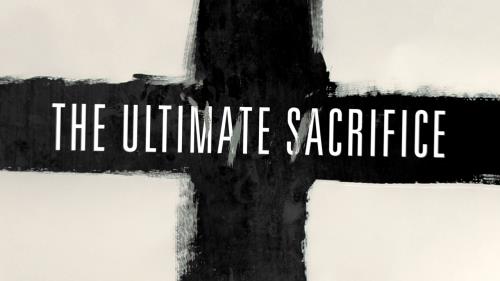-
Condemned By The Righteous Series
Contributed by Tim Smith on Nov 28, 2017 (message contributor)
Summary: Jesus Trial before the Sanhedrin
Condemned by the Righteous
Mark 14: 53-72
This is a map of the city of Jerusalem. You’ll notice the Garden of Gethsemane. It’s at the base of the Mount of Olives. From there, while Jesus was praying, he could see the temple across the Kidron Valley. When Jesus is arrested in the Garden, he makes his way back down the Kidron Valley led by the temple guard with hands and feet bound. As he does, he walks past the gate where Elijah says he will one day place his feet. He walks by the temple itself and its pinnacle, where he was tempted by the devil to cast himself down and prove he was the Messiah. He comes to the pool of Siloam, where Jesus encountered a blind man and he bent down, took some spit and dirt in his hands and rubbed it on the man’s eyes, told him to wash in the pool and he was healed and could see. Then he walks into the lower city of Jerusalem and begins to climb the 36 steps (picture of steps) to the house of Caiaphas, the High Priest. All in all, the journey was about a mile in length and would have taken about 20 minutes. When he arrived, it was probably close to 3 AM Thursday morning. Picture. The Church of St. Peter in Gallicantu has been built over the top of what was believed to be the house of Caiaphas. On the left spire is a rooster. Commemorating Peter’s denial. As you walk into the church, you go down two floors which used to be a cistern (picture of Caiaphas cistern or prison and picture of the hole in the celing) but served as a prison cell where Jesus would have been kept while they waited for the rest of the Sanhedrin to arrive. They lowered him down through a hole in the floor above. Imagine what it must have been like for Jesus as he listened to the Sanhedrin debate his fate.
Picture of the Sanhedrin. The Sanhedrin was the council of 71 elders of the people of Israel prescribed by Numbers 11:16 where God told Moses after he was overwhelmed and exhausted that it was not good for Moses to rule Israel by himself. Call 70 other people to rule with you, God said. The Sanhedrin ruled over the religious life of the Jews while Rome ruled over the political life of Israel. Their duties would have included overseeing the temple and its practices, the religious festivals of the year and the teaching and interpretation of the law. They were considered to be the most pious, religious of the people of Israel. The irony is that the ones who were seeking God the most and working hardest to do the will of God, failed to recognize God in human flesh through the person of Jesus. Just like the emperor who longs to know his subjects and thus puts on common clothes and lives among his people without anyone really recognizing him, God chose to walk upon this planet and live among his children as an itinerant teacher and preacher. He was right in their midst and they failed to recognize him.
The High Priest was the highest office of the faith and was the head of the Sanhedrin. He was also the representative of the Jewish people before the Roman governor. During Jesus’ life, this office was held by the family of Annas. Slide: Family of Annas as High Priest (Annas 6-15 AD; Elazar, Annas’ son, 16-17 and Joseph Caiaphas, Annas’ son-in-law, 18-37). At the time of Jesus, Annas, Elazar and Caiaphas formed an inner circle within the Sanhedrin. It is for this reason Mark speaks of all the high priests to whom Jesus was taken. Herod introduced fixed periods of service in accordance with Greek custom but the Romans took on themselves the prerogative to install and divest the high priests as they saw fit, probably by how well the Romans could control them and how well the High Priest could control the Jewish people. Caiaphas’ long tenure speaks of his great diplomatic skills of juggling the religious practices of the Jews and still fulfilling the expectations of the Romans. Picture of High Priest.
One sign of control Rome had on the High Priest was when Herod confiscated the priestly garment worn for the Day of Atonement when the priest would enter the Holy of Holies. Herod stored the garment in the Antonio Fortress next to the temple and humiliatingly, the High Priest would have to retrieve it days before the important holidays.
Jesus and Caiaphas. When Jesus was brought to Caiaphas, he questioned Jesus and sought to condemn him. Caiaphas already had a pre-determined plan to remove Jesus because he was a growing problem. Caiaphas said, “It is better for you that one man die for the people than that the whole nation perish.” John 11:50 This is the language of a cunningly realistic and determined politician. The hopes of the people for a messiah to lead the people against the Romans could result in an uprising, which they would surely would be defeated and would end up with the Romans further enslaving the Israelites and removing the religious freedom they enjoyed. Caiaphas’ concerns were also personal, hoping to keep his own powerful position which ensured him a life of wealth and luxury. So John 11:53 reports, “from that day on they plotted to take his life.”

 Sermon Central
Sermon Central



